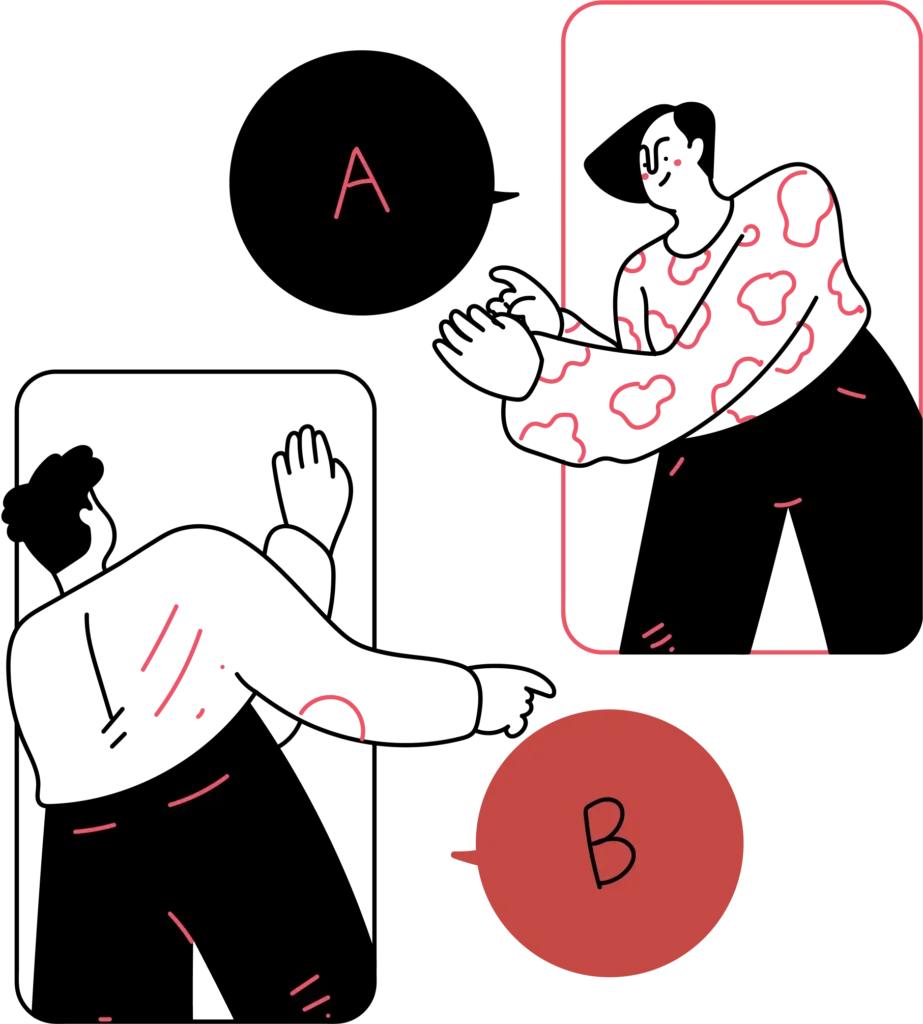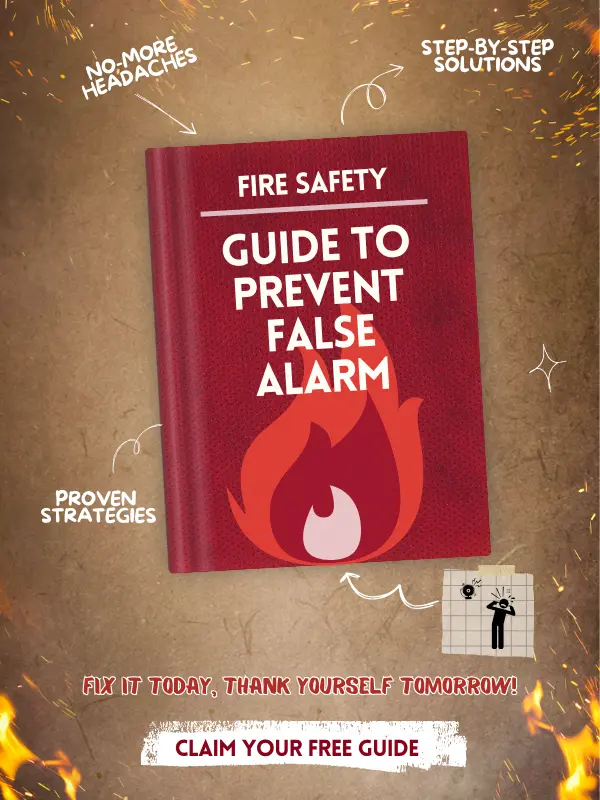
- Know when it’s safe to turn off your alarm system.
- Always follow proper shutdown procedures to avoid issues.
- Be aware of legal or safety requirements for turning off alarms.
- Ensure you’re not risking safety by disabling alarms inappropriately.
- Turn alarms back on as soon as possible to maintain protection.
Having a fire alarm system with efficient smoke detectors is like half the job done to protect yourself from the havoc of uncalled emergencies and accidental fires. According to the fire safety authority and regulatory body, the NFPA (National Fire Protection Association), more than one-third (38%) of home fire deaths are caused by the absence of smoke alarms and detectors.
In this blog, we will delve into how to turn off fire alarm systems and the various situations that require you to do so.
Table of Contents
Grab your free fire system invoice template and send professional bills to your customers!

Understanding Fire Alarms and Smoke Detectors
Fire alarms and smoke detectors comprise the most integral part of your fire notification system. Other detection units that help notify in cases of emergencies include your carbon monoxide detectors and alarms. Without these appliances, the chance of being notified in case of a fire spark or an accidental ignition is minimized. This can make it extremely risky to ensure the safety and protection of your property and your loved ones.
Even though fire alarms and smoke detectors are reliable units in times of danger, there are also cases where the chances of false alarms are significantly high, which can cause unnecessary panic among individuals. Or maybe your fire alarm system was triggered due to something as basic as cooking flames or steam. For situations such as this, you need to know how to stop the beeping noise in your system.
For this reason, it’s imperative to know the steps and procedure for turning off your fire alarm systems and notification devices and keeping them off from continually beeping.
Why Fire Alarms and Smoke Detectors Go Off
There are a plethora of reasons why your fire alarms could go off. The primary reason is the occurrence of a fire or the detection of a potential fire incident. But it is not limited to that. There is one other reason: false alarms.
But why and how do false alarms even occur?
False alarms can be easily caused due to a lot of factors. Residual dust and debris inside your unit can cause its sensors to not effectively function, which can cause disarray, contributing to wrong triggers of the alarm unit. It is also viable if your alarm system is too old and has worked out over time. Your unit could be facing wiring or battery issues, depending on the type of fire alarm system you have in your space. Or, plain and simple, your false alarm could just be malfunctioning, has been tampered with, or is facing user errors.
Types of Fire Alarms and Smoke Alarms
The methods for turning off your fire alarm system differ depending on the type of fire and smoke alarm units installed on your property.
There are three broad categories of fire alarms:
Hardwired Smoke Alarm
These are wired alarms directly connected to your property’s electrical system. They are interconnected with wires and often have a battery backup.
Battery Powered Smoke Alarms
As the name suggests, these alarms are wireless and powered by battery sources. They are quick, easy to set up, and significantly more cost-effective than traditional hardwired alarms. They are also portable and can be placed anywhere according to your needs.
Lithium Battery Fire Alarm
These are also battery-powered alarm units but have a long shelf life. They are also known as long-life lithium batteries and can last up to almost a decade, depending on usage and external factors. They are manufactured for one-time use, as you cannot remove the batteries, which eliminates the need for frequent replacements.
Turning Off Fire Alarm System
There are two options for turning off your fire alarm system.
One is to temporarily silence the alarms to stop beeping, which is usually done by pressing the silence or hush buttons.
The second one is to disable or disconnect your alarm system from the fire alarm control panel.
You must decide which settings your alarm system should have based on the requirements and needs of the situation.
Temporarily Silencing the Alarm
The basic instruction for temporarily silencing your alarm system is to press the silence or hush button, which will deactivate the triggers for a few minutes. Most smoke detectors have this button named ‘test,’ which you can press and hold for a few seconds to get the job done. Some systems do need you to turn the device back on, which is essentially important as you don’t want your systems to be deactivated for a long time, exposing you to the possibility of an accidental fire.
Disconnecting and Cleaning Smoke Detectors
Apart from temporarily silencing your alarm system, you may need to disconnect your alarms and detectors. This is required, especially when you need to clean your units or conduct a manual inspection of the physical hardware of the unit.
To disconnect your alarms and detectors, you need to deactivate them and take them off. Cleaning your fire alarm and detector systems is imperative to ensure their normal function. Dirt and debris can cause your units to lose their sensitivity, which can increase the chances of false alarms and unnecessary panic, which in turn can cause you to silence your fire alarms more often. Use a vacuum cleaner to clean off the dirt and remove any debris that is blocking the sensors or the receptors.

Prevent false alarms by temporarily silencing the system when needed. Test the effectiveness of your fire alarms’ hush feature with this free checklist.
Steps To Deactivate Your Fire Alarm System
Here’s a step-by-step guide to deactivating your fire alarm system.
Locate the control panel
you need access to the fire alarm control panel to deactivate your fire alarm and suppression units.
Get an Authorized personnel
Accessing your fire alarm control panel requires codes. Hence, you need an authorized fire personnel or a building manager to help you with that. Enter the access code to gain entry to the control panel.
Identify and silence the triggered unit
The next part identifies the unit that has been triggered by an unharmful activity. From here, it’s easy to deactivate your system. First, silence the alarm by pressing the silence button, followed by confirming the silencing.
Reset your unit
After your triggered unit has been silenced and the beeping noise has mellowed down, press the reset button of your device and return it to the default settings.
Common Issues and Solutions To Prevent False Alarms
Although deactivating your alarm system is a simple process, there are some preventive measures that you can take to avoid common issues that can persist.
Fire Alarm and Smoke Detector Maintenance
Have a thorough inspection of your alarm units done once in a while to maintain optimal performance at all times, avoiding any chance of danger by operational units. If it is a battery-powered smoke alarm, get them tested monthly and replace them every 5-10 years. Hardwired smoke alarms also require monthly inspections with replacement frequency every ten years.
Change Batteries and Replace Smoke Alarms
If your unit is battery-powered, change the batteries once a year to avoid sudden deactivation. Some alarm batteries may need to be changed once every six months. So, read the manual provided by the manufacturer to thoroughly understand your units’ functionality and adhere to the requirements for optimal performance.
Optimal Installation Location of Smoke Alarms in Your Home
Install smoke alarms in every room and hallway. It is imperative to place them at every level of your establishment to ensure that no space is missed and that they offer complete detection coverage. You can check the guidelines provided by your manufacturer for placement and installation instructions.
Conclusion
Keeping your fire alarm systems maintained and compliant with the codes and regulations goes a long way toward keeping your property and occupants safe. Hence, it’s best to prevent false alarms as much as possible to avoid the hassle of deactivating your system from time to time.
Prevent false alarms from ruining your day. Get this straightforward, no-fluff guide and keep your fire alarms under control.


Get Insights Delivered Straight
To Your Inbox!
Related Reading
Why Your Field Software Management Software Needs QuickBooks Integration
ZenTrades Why Your Field Service Management Software Needs QuickBooks Integration Read More Request Demo...
Read MoreZenTrades How To Manage Electrical Service Agreements Like...
Read MoreZenTrades The Best 5 Jobber Alternatives In 2023...
Read More


